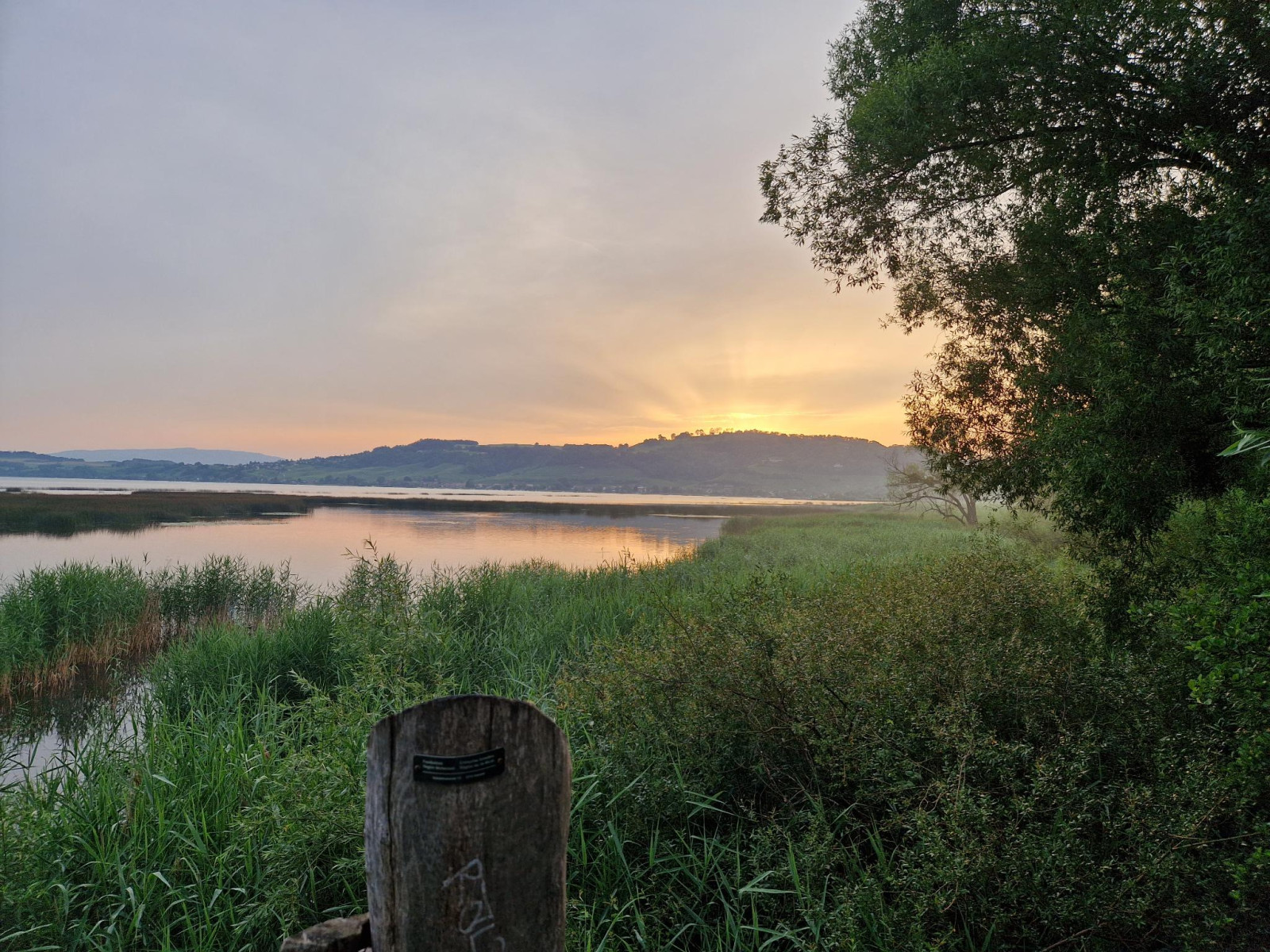Opis
The Chablais lies between the prominent and ornithologically interesting Mont Vully and the small Löwenberg on the northern shore of Lake Murten. The deciduous forest there is only a hundred years old. It was created by artificially lowering the water level at the end of the 19th century. A wide reedbed extends into the lake, which can be partially observed from platforms.
The beautiful footpath lends itself to practising bird song identification: The view of the reedbed and the lake is often obscured, from where trzciniak, brzęczka, and trzcinniczek (zwyczajny) call. wilga (zwyczajna), gajówka, and słowik rdzawy sing in the high treetops and thickets. dzięciołek, dzięcioł średni, and dzięcioł czarny also breed here. A view from the platforms is not only rewarded with spectacular sunsets. wodnik (zwyczajny), zimorodek and, with a bit of luck, bączek can also be seen. rybitwa rzeczna, which breed on the artificial raft at the northern end of the area, often fly past.
In future, it may also be possible to observe the rybołów more often, which is to be reintroduced to the Central Plateau. łabędź krzykliwy, Płaskonos, świstun, and kszyk are not uncommon winter visitors. Finally, among the rarities observed here are the ogorzałka, czerniczka, kobczyk, jemiołuszka, bielaczek, and bekasik.
Szczegóły
Dostęp
The Le Chablais area can be reached by train either from Sugiez in the north or Muntelier-Löwenberg in the south. If you are coming from Sugiez, it is worth going first to the quay of the Canal de la Broye and looking to the left at the breeding platforms of the rybitwa rzeczna. The path through the area that is closest to the water and from which you can reach the observation platforms can only be explored on foot (a cycle path runs parallel to it). Numerous information boards along the way explain the natural area.
Teren i siedlisko
Las , Tereny podmokłe , Trzcinowiska , JezioroWarunki
PłaskiTrasa dookoła
NieCzy luneta będzie przydatna ?
Może być przydatnaUdany sezon obserwacyjny
Przez cały rokNajlepszy czas na wizytę
WiosnaTrasa
Droga nieutwardzonaPoziom trudności szlaku pieszego
ŁatwyDostępne
PieszoCzatownia/platforma obserwacyjna
TakDodatkowe informacje
Many mosquitoes breed here at the corresponding times of year. There are fewer of them on the platforms, but it is definitely advisable to take mosquito spray with you on the way.





